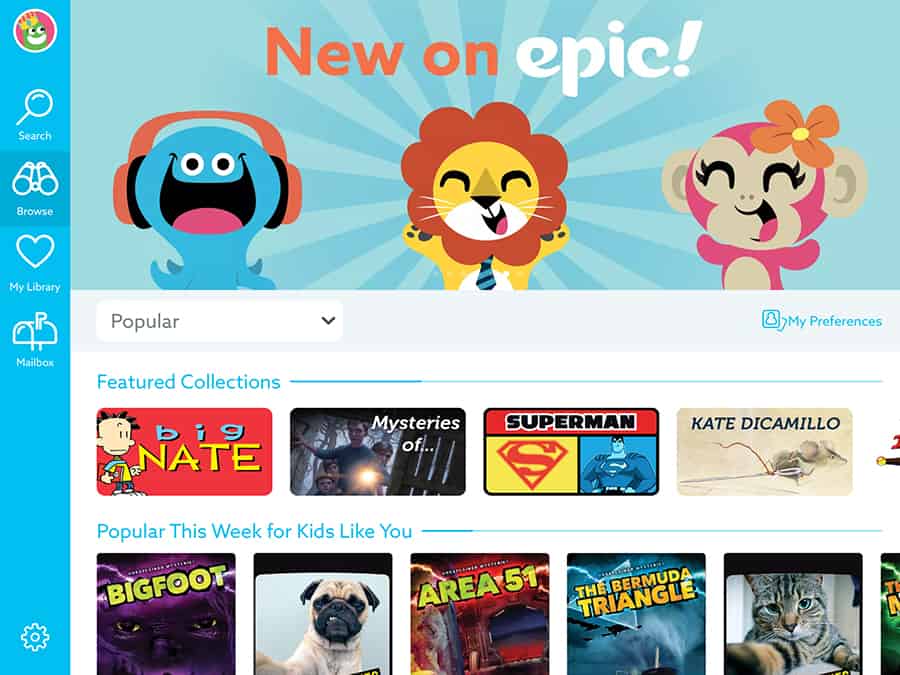
Above: The Epic reader offers a library of 25,000 books by subscription.
BitDepth#1124 for December 21, 2017
I am an unabashed fan, no, let’s be honest here, an evangelist of reading. Given that part of my livelihood depends on the discerning and enthusiastic consumption of words in the pursuit of understanding, that’s hardly surprising.
But my romance with words runs much further back than the concerns of my profession today, as it tends to be with people who write.
My first engagement with words beyond the West Indian Reader and the adventures of Dan, the man in the van was with the scribbling that interrupted the colourful adventures of Superman and his friends.
It would be almost half a decade before I would find out who was responsible for many of those words, but to this day I can’t look at the art of Kurt Schaffenburger and Wayne Boring on Superman without a shudder of delight at the long-ago sense of discovery and revelation that accompanied those earliest engagements with the words that added dimension to these adventures.
For that reason, I am not a snob about what children read, only that they should read and read with purpose. As what’s now called a tween, I demolished all the “boys” books at Muir Marshall, including all the available adventures of Biggles and William before moving on to The Chalet School, ostensibly a “girls” book. I’ve never understood the gendering of literature, or for that matter, toys.
This isn’t going to be a diss of atoms over bits. Printed books are awesome and have their own particular qualities, including tactile and olfactory engagement, particularly for people who have decades worth of them and the libraries that accompany such collections.
But it would be silly to ignore the advantages of books in digital format, particularly when it comes to engaging beginning readers.
There’s no reason for a book in digital format, freed of the physical constraints of publishing, to ever go “out of print,” and indeed, some books which have been effectively lost on crowded shelves have been returning to publication in digital form.
One recent rediscovery, Shel Silverstein’s The Giving Tree, has prompted interesting intergenerational conversations across a divide of more than 50 years.
There are now around 280 books on my Kindle bookshelf that target a reader younger than nine and I’ve recently discovered the Epic app (iOS, Android) which offers a growing library of 25,000 books for readers 12 and under using a subscription model.
Most books for children are richly illustrated, and the most cost-effective way to digitize them is to create scans of the pages, which works well when the text is large enough to be scaled down successfully on a nine to ten-inch tablet screen.
Kindle versions of such books are often enhanced with popup text that’s much larger and easier to read, which can be disruptive, but make sensible use of the capabilities of the computing device. Both Epic and Kindle offer audiobook versions of some titles, and many Epic books include dictionary popups.
The old rules of reading with children still apply though, read to until you can read with, correcting and clarifying new words as you go. Nothing prerecorded can match that experience.
It’s a heated and competitive space, so you will often find books, particularly ones that are part of a series, cut in price to around US$2.
Early books on tablets were multimedia extravaganzas, with recorded readers, animations and page turning flourishes. Those costly app experiences have fallen out of favour generally, with only the largest properties supporting the development costs of all those flourishes.
Favorites around these parts include V.Moua’s stories of Sammy, a cantankerous red bird, Little Golden Books about Star Wars, the Katie Woo series and books by Robert Munsch from the 1980’s.
Some attractive digital books turn out to be utter rubbish, but they are in a distinct minority and usually reveal themselves as obviously substandard when previewed.
But there is something remarkable about the dynamic of finding a book on Kindle that’s a big hit at bedside, being able to buy another in the series immediately and continuing the reading session seamlessly.
When it comes to reading, my mantra is simple. Light the spark early and feed it with whatever comes along that keeps it burning. That worked for me.


